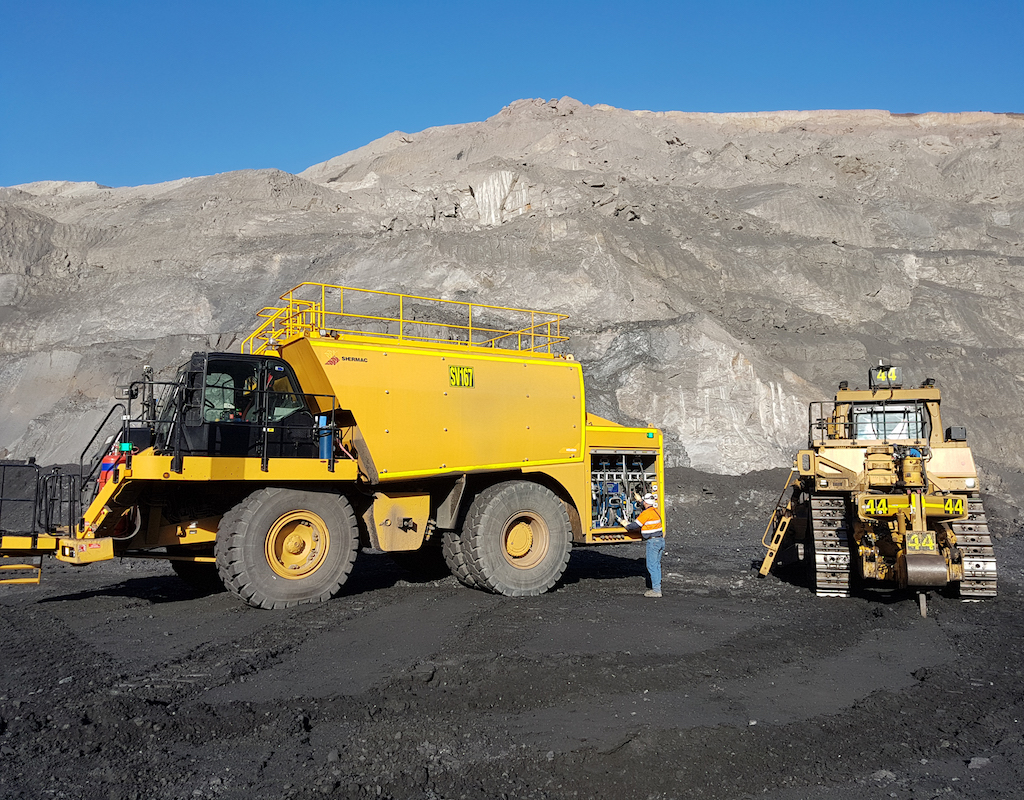
By: Michael Ray, CEO at Shermac
In many buying situations, the customer knows exactly what they want and chooses their desired product off the shelf, out of a catalogue or from among the standard items the company produces.
That is not the way it works at Shermac.
Shermac is an Australian vehicle customisation company, based in Western Australia and we’ve been manufacturing customised equipment for mining vehicles for nearly two decades. The plant employs a team of designers, fabricators, painters and assemblers.
We mainly supply mining conglomerates – BHP, Rio Tinto and Fortescue Metals Group – but also customise equipment for OEM dealers (e.g. Caterpillar, Komatsu etc.) around the country.
The process of customisation begins months before the vehicle is scheduled to start work on a site when a fleet manager determines an existing vehicle is approaching the end of its useful life and needs to be replaced.
The customer comes to us with a concept in mind and the team asks a range of questions designed to uncover how the vehicle is going to be used. Questions such as the optimal servicing intervals for minimising downtime, what servicing products will be needed and whether they will be easily available. Only once all these and other queries have been satisfactorily answered, will we come up with a concept that meets the client’s objectives and does the job that needs to be done. A common example of this would be a vehicle customised to carry a larger than normal volume of fuel, coolants and lubricants to sufficiently service all the mining vehicles working at a particular location.
Shermac products are complex and often a linchpin of the production process. It needs to be reliable and a full complement of spare parts readily available. A further consideration is the environment with the spillage of hydrocarbons, oil, diesel, fuel coolants and other toxic products not acceptable practice.
Another part of the discovery process is for us to understand what each person involved in the purchase needs. For instance, the truck operator – who often treats their vehicle like family – wants to be sure there is storage available for their specific needs. The plant manager on-site is responsible for keeping the fleet at optimum performance, so will make decisions based on mechanical considerations such as oil change intervals, grease points etc. The commercial buying manager wants to reduce risk and to know that money is being spent wisely.
Once we feel that we have a full understanding of what the company is trying to achieve, our design engineers come up with a graphical representation of what the customised product will look like and its dimensions.
When all the stakeholders have had an input and the design is finalised, a purchase order is received from the customer and, if needed, finance arranged. Around 50% of the vehicles that we customise are on finance plans with Shermac paid on delivery of the vehicle. High levels of trust exist between Shermac and our customers and so we don’t require deposits.
With the purchase order safely in hand, the design is finalised and turned from a graphic representation to a finished design so the manufacturing process can begin. Shop drawings are made that include the details for parts needed to be brought in. This includes any steel needed, which arrives cut to shape, and is then bent, folded and joined to create the necessary product. It is tested for leakages and double-checked for quality control.
Once it passes quality tests, the product’s surface is prepared for finishing, which involves sandblasting, painting and assembly. Mounted electronic components are fitted and the product itself is affixed to the chassis.
Generally, durability of the product coating takes precedence over aesthetics, and high-quality industrial paint system is used. However, where the vehicle we build is the representation of our customer to their customer, then aesthetic values carry more weight, and alternative coatings such as powder coating may be used.
After finishing is completed, the vehicle is tested again for functionality. Fluid systems are wet-tested to ensure they’re working as designed and are run close to optimum settings for four hours to resolve any bugs.
Once every aspect of the product has been rigorously tested and retested, the vehicle is ready for delivery. If the product is truck mounted, it would go back to the truck dealer for them to carry out their final pre-delivery process. It is then either driven or carried to the work site. As a service to clients, we help arrange these final stages of the process to speed up deployment.
Our team works hard to understand the systems used on sites where the vehicles will be operating and to work with that system to help eliminate human error. For instance, to avoid fuels and liquids being transferred into the wrong tank or reservoir, connections are colour-coded. In another case, an oil change for a digger was taking 12 hours every two weeks. We devised a solution that slashed the oil change to just 45 minutes. This out-of-box thinking saved the customer both time and money.
We encourage clients to be clear on what they want to achieve so we can recommend the best solution from the outset. For instance, if the high number of trips required for refuelling is causing problems, we will use our knowledge and experience to come up with a solution that might not otherwise have been thought of.
This type of creative thinking is why we are nationally recognised vehicle customisation consultants and advisors with a reputation for integrity and quality.
Talk to our well-trained and knowledgeable team to find out more about our customisation process and how we can help you.
Call our team on 1300 799 943 or email [email protected] with your inquiry.